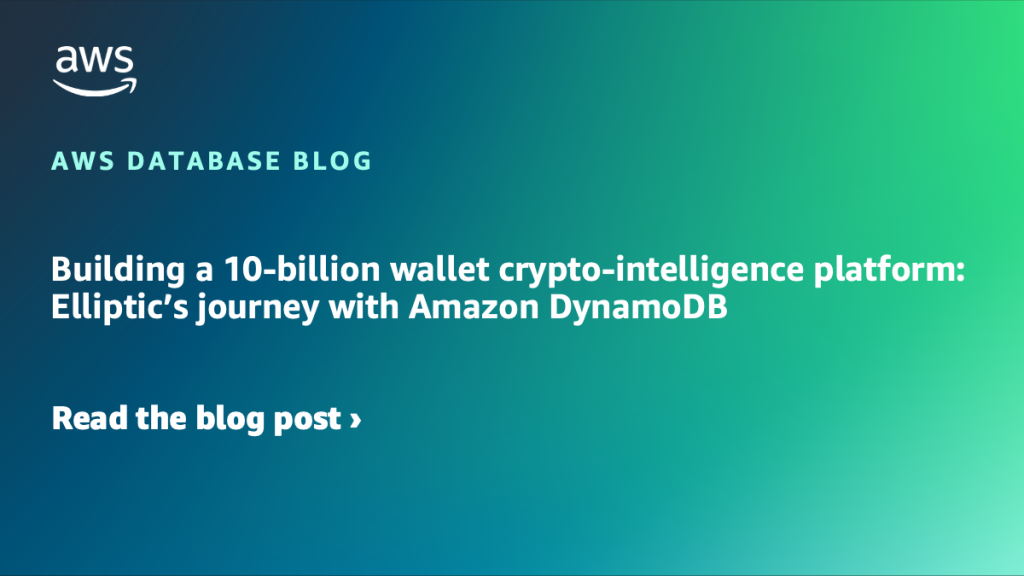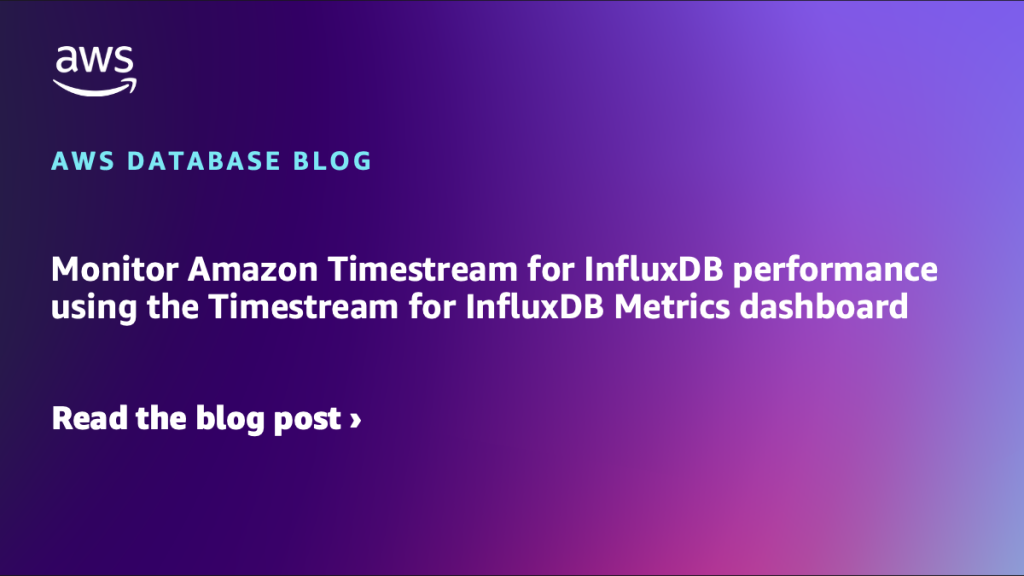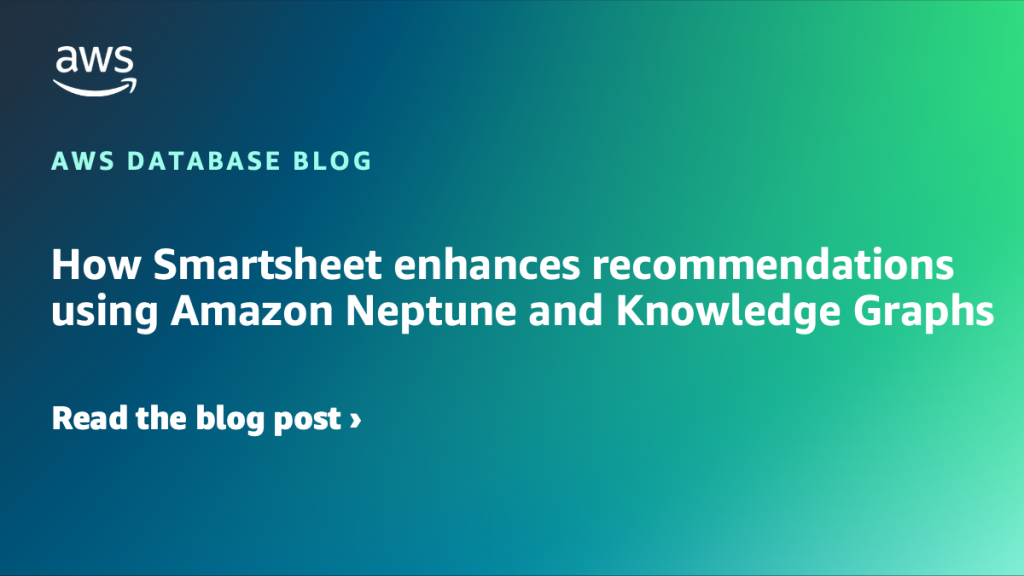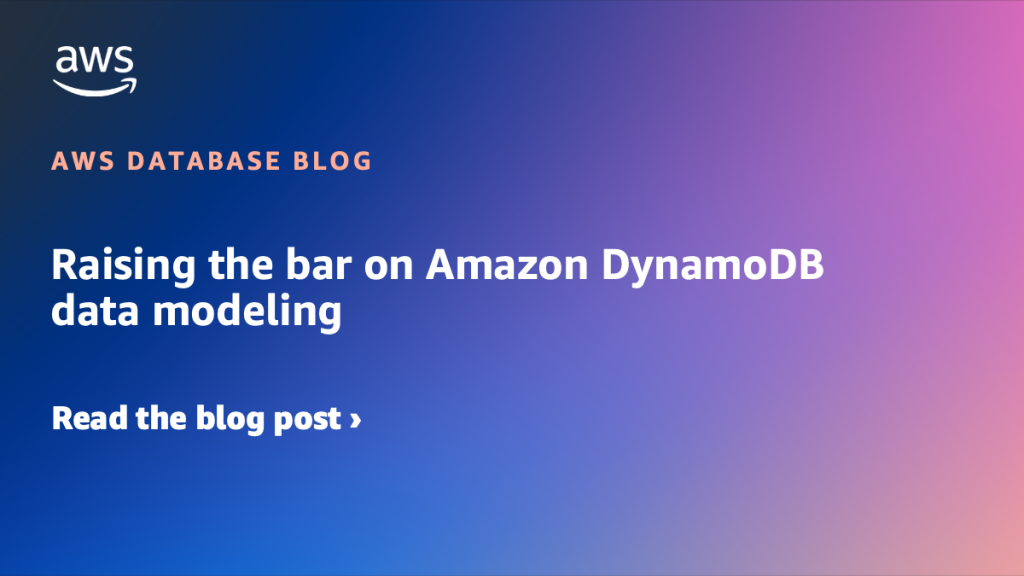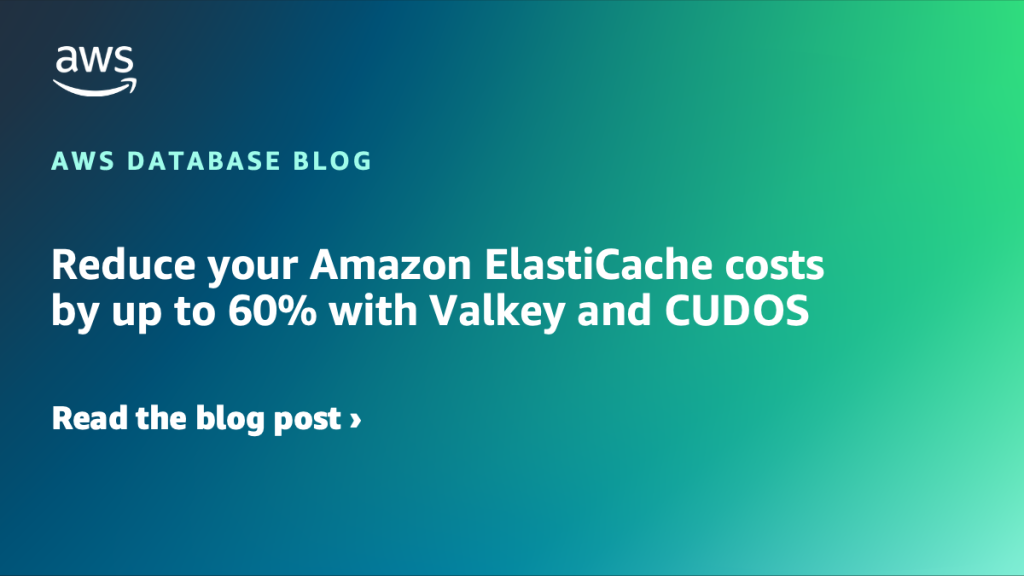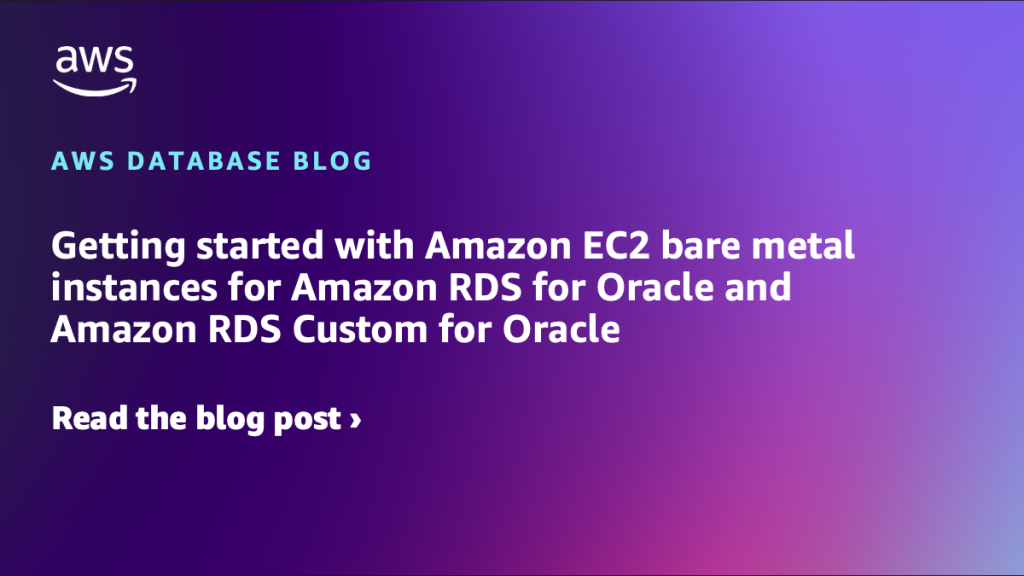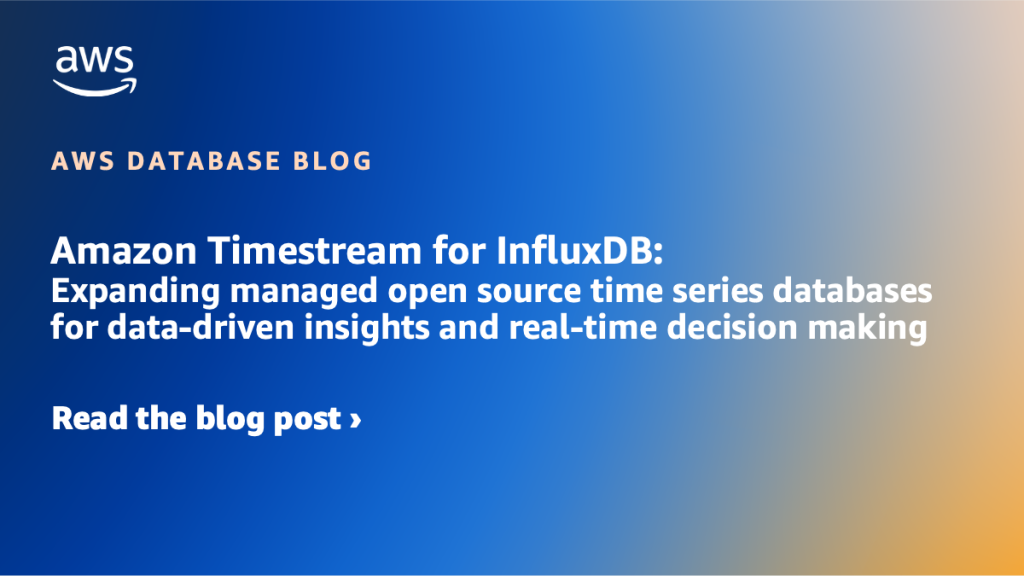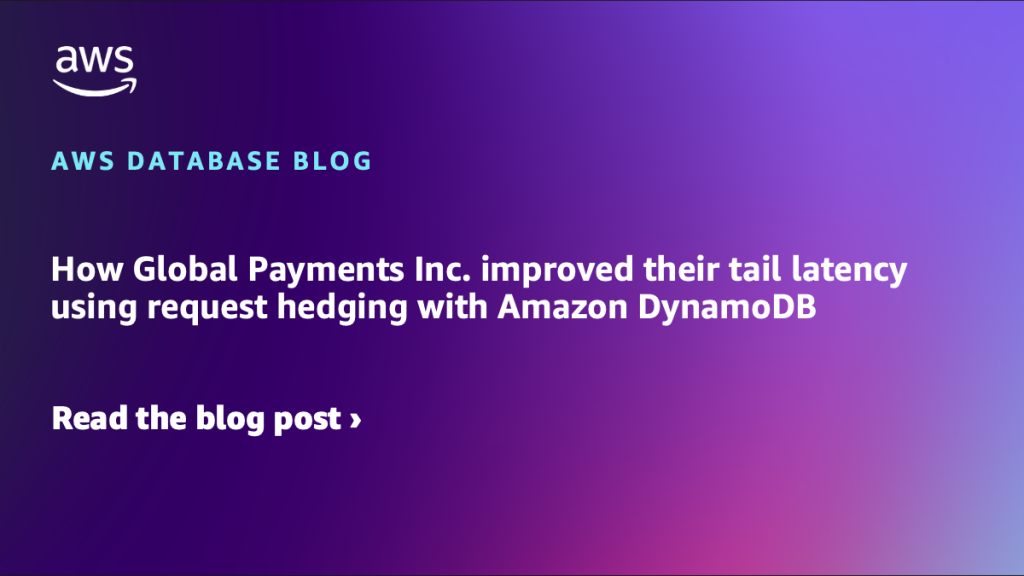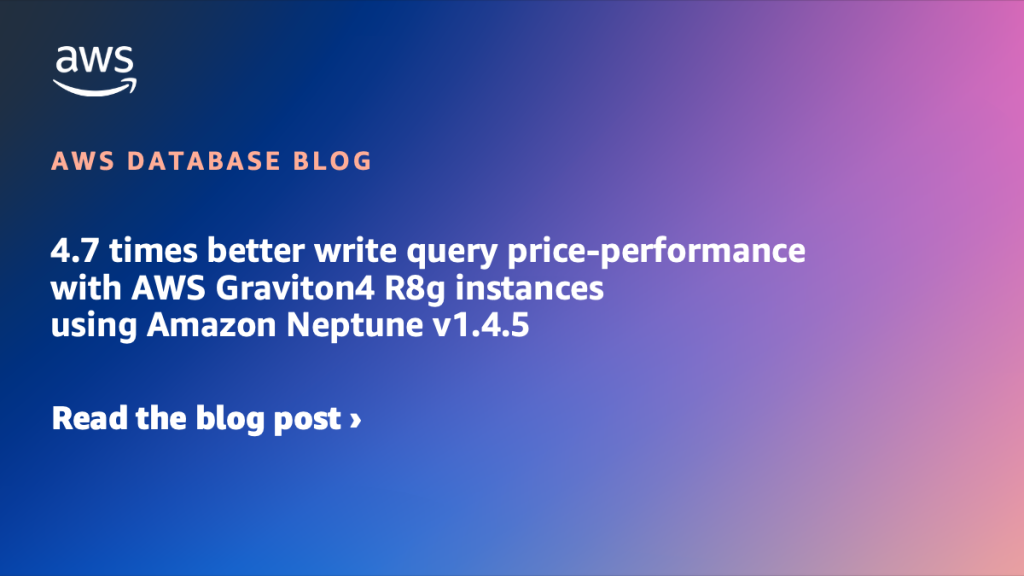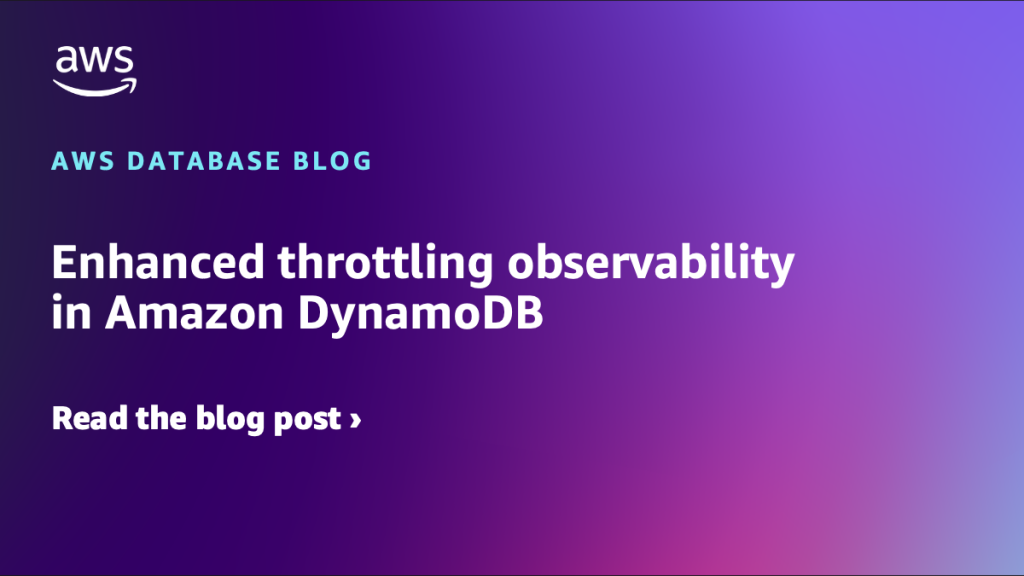AWS Database Blog
Category: Intermediate (200)
Building a 10-billion wallet crypto-intelligence platform: Elliptic’s journey with Amazon DynamoDB
In this post, we explore how Elliptic uses Amazon DynamoDB to build a crypto-intelligence platform that scales to over 10 billion wallets globally and supports real-time risk detection across the fast-evolving digital asset ecosystem. We discuss the data model design, indexing strategies, and operational setup that Elliptic uses to power real-time risk analysis and complex investigations at scale.
Monitor Amazon Timestream for InfluxDB performance using the Timestream for InfluxDB Metrics dashboard
The Timestream for InfluxDB Metrics dashboard adds the ability to perform trend analysis, create actionable insights, set up alerts, and automate reporting. You can configure the Timestream for InfluxDB Metrics dashboard to suit your business needs and build a robust and optimized time series workflow. In this post we walk you through how to deploy the Timestream for InfluxDB Metrics dashboard to start monitoring the performance of your fleet of Timestream for InfluxDB databases.
How Smartsheet enhances recommendations using Amazon Neptune and Knowledge Graphs
Smartsheet is a leading SaaS-based collaborative work management platform trusted by enterprises worldwide to manage projects, automate workflows, and drive collaboration at scale. In this post, we describe the Smartsheet Knowledge Graph, built in partnership between Smartsheet and AWS. The Smartsheet Knowledge Graph is a unified data model connecting people, content, and work in Smartsheet, representing how users interact with assets, content, and their collaborators.
Raising the bar on Amazon DynamoDB data modeling
In April 2025, we introduced the Amazon DynamoDB data modeling tool for the Model Context Protocol (MCP) server. The tool guides you through a conversation, collects your requirements, and produces a data model that includes tables, indexes, and cost considerations. In this post, we show you how we built this automated evaluation framework and how it helped us deliver reliable DynamoDB data modeling guidance at scale.
Reduce your Amazon ElastiCache costs by up to 60% with Valkey and CUDOS
In this post, we show you how to save costs on Amazon ElastiCache by upgrading your cluster engine to ElastiCache for Valkey. If you’re currently using ElastiCache for Redis OSS, you can achieve up to 60% cost savings by upgrading to Valkey.
Getting started with Amazon EC2 bare metal instances for Amazon RDS for Oracle and Amazon RDS Custom for Oracle
In this post, we explore the support for AWS bare metal instances on Amazon EC2 bare metal Instances for Amazon RDS for Oracle and RDS Custom for Oracle.
Amazon Timestream for InfluxDB: Expanding managed open source time series databases for data-driven insights and real-time decision making
In this post we are announcing the strengthening of the partnership between AWS and InfluxData as Timestream adopts InfluxDB as the main purpose-built time series database.
How Global Payments Inc. improved their tail latency using request hedging with Amazon DynamoDB
Amazon DynamoDB delivers consistent single-digit millisecond performance at any scale, making it ideal for mission-critical workloads. However, as with any distributed system, a small percentage of requests may experience significantly longer response times than the average. This phenomenon, known as tail latency, refers to these slower outliers that can be seen by looking at metrics such as the 99th or 99.9th percentile of response times. In this post, we explore how Global Payments Inc. (GPN) reduced their tail latency by 30% using request hedging. We review the technical details and challenges they faced, providing insights into how you can optimize your own latency-sensitive applications. In a next post we’ll share detailed implementation examples.
4.7 times better write query price-performance with AWS Graviton4 R8g instances using Amazon Neptune v1.4.5
Amazon Neptune version 1.4.5 introduces engine improvements and support for AWS Graviton-based r8g instances. In this post, we show you how these updates can improve your graph database performance and reduce costs. We walk you through the benchmark results for Gremlin and openCypher comparing Neptune v1.4.5 on r8g instances against previous versions. You’ll see performance improvements of up to 4.7x for write throughput and 3.7x for read throughput, along with the cost implications.
Enhanced throttling observability in Amazon DynamoDB
Today, we’re announcing improved observability for throttled requests in Amazon DynamoDB. These enhancements provide developers with enriched exception messages, detailed Amazon CloudWatch metrics, and a new, more cost-effective mode for CloudWatch Contributor Insights. Together, these improvements make it straightforward to understand, monitor, and optimize your DynamoDB applications’ performance. In this post, we explore how these […]
